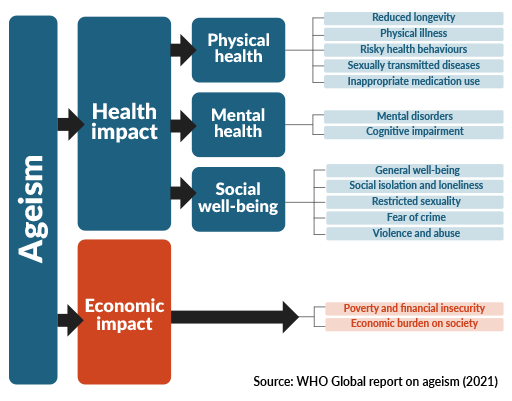1.4 Impacts of ageism
A World Health Organisation report on ageism published in 2021 found that 1 in 2 people worldwide hold ageist views against older people (2021).
As shown in Figure 6, the report evidenced the impact of ageism on older people’s physical and mental health as well as their social well-being. The evidence reiterated the need for global action to combat ageism.
Ageism has serious and far-reaching consequences for people’s health, well-being and human rights:
- For older people, ageism is associated with a shorter lifespan, poorer physical and mental health, slower recovery from disability and cognitive decline.
- Ageism reduces older people’s quality of life, increases their social isolation and loneliness (both of which are associated with serious health problems), restricts their ability to express their sexuality and may increase the risk of violence and abuse against older people.
- For individuals, ageism contributes to poverty and financial insecurity in older age, and costs society billions of pounds.
Ageism can also lead to higher costs for public services and the economy. An example would be where older people experience barriers and challenges in accessing GP services, there is a risk that these barriers and challenges will push individuals towards accessing other, less appropriate unscheduled care services, adding unnecessary pressures and costs to other parts of public health services.
Older people make a significant contribution to society through working, volunteering, providing care and support and paying taxes. Ageism can lead to us all undervaluing the vital roles and contributions played by older people across society.

